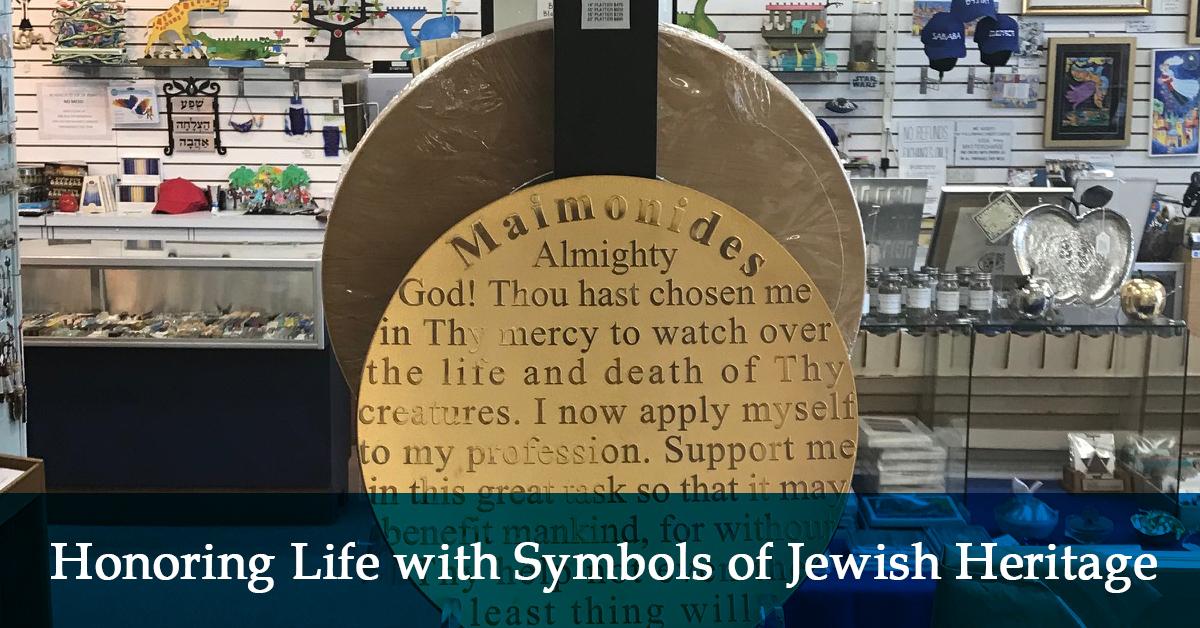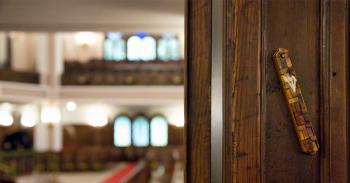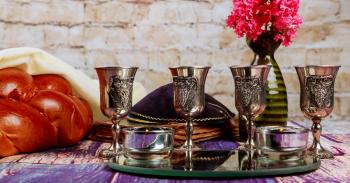
Life. Perhaps more than any other religion, life sits at the heart of Judaism, valued above all. In fact, Chazal (the Jewish Sages) state that safeguarding life comes before any other mitzvah, basing this (amongst others) on Leviticus 18:5: “Ye shall therefore keep My statutes, and Mine ordinances, which if a man do, he shall live by them: I am the LORD.” Naturally, it follows that the Jewish faith offers an abundance of lifecycle events to celebrate our existence, as well as opportunities to mark life’s non-religious moments in a Jewish fashion. It should also come as no surprise that Jewish life has given rise to a plethora of symbols, traditions, gifts and awards to help commemorate and revel in these occasions.
At Shalom House, we are happy, therefore, to present the following article that introduces a few of our favorite presentation awards and gifts and delves into the symbolism behind them.
To better fathom the significance of the gifts, let’s begin with an abbreviated review of the place of symbols in Jewish culture.
“Thou shalt not make unto thee a graven image, nor any manner of likeness, of any thing that is in heaven above, or that is in the earth beneath, or that is in the water under the earth; thou shalt not bow down unto them, nor serve them; …” Exodus 20:3-5
It’s true that the 2nd commandment forbids making images of God, in any form or from any materials, and you will be hard-pressed to find such “idols” or anything alluding to such objects in homes of observant Jews. This does not mean, however, that Judaism is bereft of symbolism, quite the contrary, the religion of the Hebrews contains a rich portfolio of symbols. The reasoning is quite simple: “symbolism” is the use of concrete things to denote abstract ideas. Per this definition, the use of symbols that don’t attempt to describe God, or of abstract notions that allude to characteristics of the Almighty, is not in conflict with the 2nd commandment.
You need not take our word for it. All you need is to take a look at any Jewish text, beginning with the Bible. Here are a few examples:
While understanding Jewish mysticism is well beyond the scope of this article (or an entire lifetime), Kabbalistic texts and lore are suffused with symbols. At the very core of the Kabbalah are the “Sephirot” (enumerations), which can be very simplistically described as God’s various manifestations in the material world. The metaphor of a tree is used to describe scholarly movement along the Sephirot, from the more physical to the more divine. Moreover, each Sefirah is represented by one or more symbols, such as the patriarchs, Abraham, Isaac, and Jacob, respectively representing the Sefirot of Loving-kindness, Power, and Harmony, or the Sefirah of sovereignty which is depicted as a pink rose, where its red color indicates power and its white color signifies loving-kindness.
You may be wondering why we have been discussing Jewish symbolism when the article is about gifts and Jewish life. Our reasoning is plain – Any symbol from the Bible, Jewish thinking or Jewish history can be given as a gift that is both meaningful to the occasion for which the gift is given and bestows greater meaning upon the gift itself. For example, Ezekiel’s rainbow mentioned earlier on could be gifted to hosts of a Pesach Seder. Beyond the beauty of the gift, it also symbolizes the radiance of God emanating from the loving home of the gracious hosts.
Of course, every gift is itself a symbol, portraying the gratitude, admiration, recognition, love or some other emotion of the giver. When the gift is rooted in Jewish heritage, it serves to enhance the feelings the giver wishes to convey.
Keeping with this view of Jewish symbolism, we thought it appropriate to bring a few of our favorite gifts from Shalom Houses’ extensive selection and to discuss the symbolism behind them.
Beautiful, thoughtful and pious, so many Jewish prayers lend themselves to being inscribed on plaques or other artifacts and given as gifts.
Representing protection against the evil eye, the Hamsa hand (a five-fingered hand with an eye at the center) is a popular talisman in Judaism and other religions. You will find Hamsas forged as jewelry, as bases for inscribing prayers (such as Birkat HaBayit) or as stand-alone sculptures.
Learn more about Hamsas in our blog article or browse our selection of Hamsas.
Jacob’s Ladder is a ladder leading to heaven appearing in the patriarch Jacob’s dream during his flight from his brother Esau, as told in the Book of Genesis: “And he dreamed and behold a ladder stationed on the earth and its top reaches the sky, and behold the angels of God ascending and descending on it. And behold God stands above it …” (Genesis 28:12-13).
The significance of the dream has been debated, but most interpretations agree on two meanings:
The exquisite sculpture linked to herein or any other depiction of the ladder need no special reason to be given as a gift, but we think it is especially suited to occasions marking reaching of new heights, such as graduations or promotions.
With all of the symbolism described herein, a gift is still a means of personal or group expression, and for those of us for whom Judaism plays a central role in our lives, for whom life and Jewish identity are tightly intertwined, a Judaica gift is the ultimate way to express our feelings to those we hold dear.



